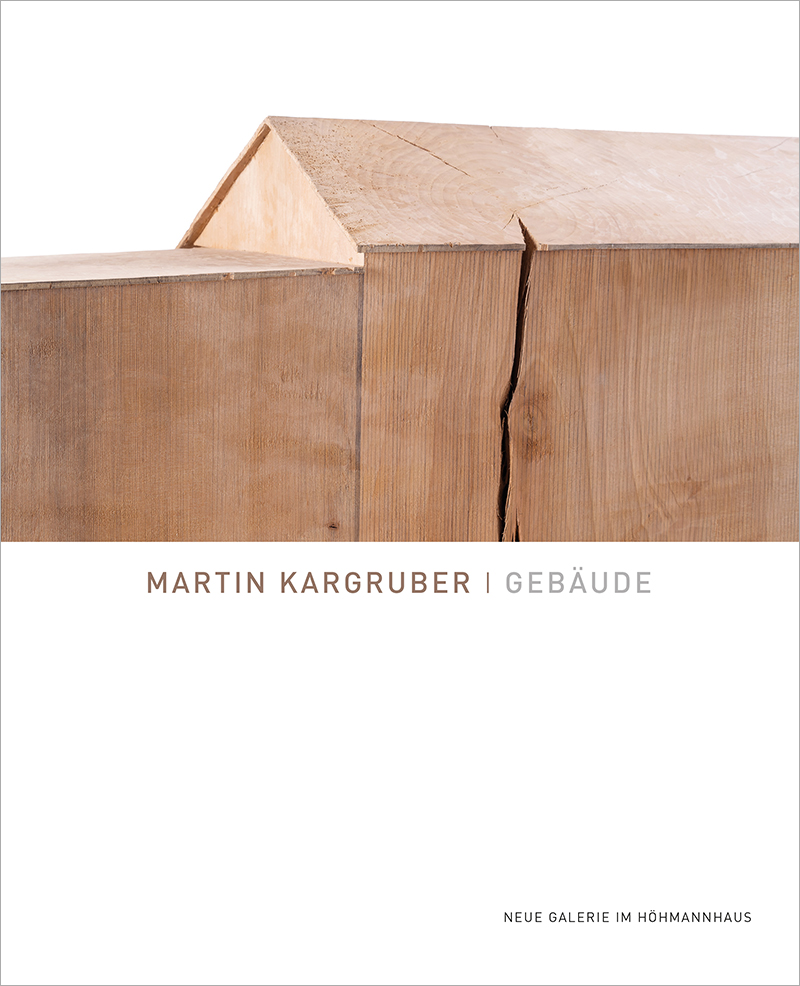Martin Kargruber – Buildings

Essay:
Dr. Thomas Elsen,
curator
Format 21 x 26 cm
8 pages
Available at:
Kunstsammlungen und Museen Augsburg,
Neue Galerie im Höhmannhaus
hoehmanngalerie@augsburg.de
www.hoehmannhaus-augsburg.de
Martin Kargruber | Buildings
Wood sculpture and drawing
Thomas Elsen
Wood in its original condition is the preferred material of the South Tyrolean sculptor Martin Kargruber. The extraordinary feature of his filigree, often miniature, architectural sculptures is their one-piece design, although they give the impression of being composed of several, small parts. Smoke escapes from the chimneys and goes with the wind. Rainwater pours out of the gutter at the roof of a building. Tools are leaning against facades of houses. Firewood is seemingly artistically stacked. But ultimately everything is made up of a single sculptural block. This astonishing, virtuosic material treatment places Kargrubers sculptures in a contrast between seemingly playfulness and deliberate irritation which can only be perceived for the attentive eye, but which decisively defines the character of his works.
But the sculptor triggers such irritations not only by virtuoso technique. His houses are also metaphors. They are solitarily placed on high pedestals like on mountain plateaus, on steel wall mounts, as on rock ledges, on wheels - massive, yet contradicting the idea of the steadfastness of a house. They contain personal history, biographical, plastic "recollection images" (Lisa Trockner) and, at the same time, prototypical pictorial inventions with a crucial proportion of poetic abstraction.
There are also those breaks in style that take away every cuteness of the sculptures, and give them a sense of monumentality with their compact quality. Idyll and threat are always dialectically opposed in Kargrubers plastic sculptures. Huge transmission masts towering over tiny houses, a 'little dunghill' made of limewood in a rural environment, and a nuclear reactor ('Isar II') appear side by side. All this is intentionally assigned to one another. The presentation form of Martin Kargruber’s exhibition is not a representative collection of individual sculptures in space, but provides another overall picture - in a way, the artist's view of the world. As a viewer, we move through it as if through an ‘en miniature’ landscape.
The pencil remains visible as a drawing on the surfaces and is always listed by Kargruber as a material specification. This makes it not only an aesthetic effect, but an integral part of the sculpture. The result and the process are equally important to the artist. This can also be seen in the drawings of Kargruber. As drawings of a sculptor, they are studies, snapshots, state descriptions of the creation. In any case a component of the artists overall perspective, which adds an idea of growth, the story of things and a sensitivity for time to our perception of sculptures as something seemingly static.

